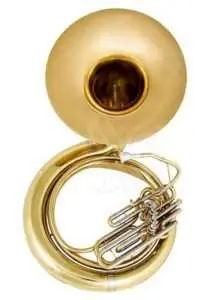Tonality thermometer: one interesting observation…
Contents
Are you familiar with the so-called “tone thermometer”? Cool name, right? Don’t be alarmed, musicians call a tonal thermometer one interesting scheme, similar to the scheme of a quarto-fifth circle.
The essence of this scheme is that each key occupies a certain mark on the scale depending on the number of key signs in it. For example, in G major there is one sharp, in D major there are two, in A major there are three, etc. Accordingly, the more sharps there are in a key, the “hotter” its “temperature” is, and the higher the position it occupies on the “thermometer” scale.
But flat keys are compared to “minus temperature”, so in the case of flats the opposite is true: the more flats in a key, the “colder” it is and the lower its position on the tonal thermometer scale.
Tonality thermometer – both funny and visual!
As can be seen from the diagram, the keys with the largest number of key signs are C-sharp major with its parallel A-sharp minor and C-flat major with its parallel A-flat minor. They have seven sharps and seven flats. On the thermometer, they occupy extreme positions on the scale: C-sharp major is the “hottest” key, and C-flat major is the “coldest”.
Keys in which there are no key signs – and these are C major and A minor – are associated with a zero indicator on the thermometer scale: they have zero sharps and zero flats.
For all other keys, by looking at our thermometer, you can easily set the number of signs in the key. Moreover, the higher the tonality is on the scale, the “hotter” and “sharper” it is, and, conversely, the lower the tonality is on the scale, the “colder” and “flat” it is.
For greater clarity, I decided to make the thermometer scale colored. All sharp keys are placed in circles of a reddish hue: the more marks in the key, the richer the color – from subtle pinkish to dark cherry. All flat keys are in circles with a blue tint: the more flat, the darker the shade of blue becomes – from pale blue to dark blue.
In the center, as you may have guessed, there is a circle in turquoise for neutral scales – C major and A minor – keys in which there are no signs at the key.
Practical application of the tonality thermometer.
Why do you need a tonal thermometer? Well, in the form in which I presented it to you, it can become both a small convenient cheat sheet for orientation in key signs, and a visual diagram that will help you learn and remember all these tones.
But the true purpose of the thermometer, in fact, lies elsewhere! It is designed to easily calculate the difference in the number of key characters of two different tones. For example, between B major and G major there is a difference of four sharps. A major also differs from F major by four signs. But how can this be??? After all, A major has three sharps, and F major has only one flat, where did these four marks come from?
The answer to this question is given by our key thermometer: A major is in the “plus” part of the scale among sharp keys, up to “zero” C major – just three digits; F major occupies the first division of the “minus” scale, that is, it is among the flat keys, from C major to it there is one flat; 3+1=4 – it’s simple…
It is curious that the difference between the furthest keys in the thermometer (C-sharp major and C-flat major) is as much as 14 characters: 7 sharps + 7 flats.
How to find key signs of the same tonality using a tonality thermometer?
This is the promised interesting observation about this thermometer. The fact is that the keys of the same name differ by three signs. Let me remind you that keys of the same name are those that have the same tonic, but the opposite modal inclination (well, for example, F major and F minor, or E major and E minor, etc.).
So, in the minor of the same name there are always three less signs compared to the major of the same name. In the major of the same name, compared to the minor of the same name, on the contrary, there are three more signs.
For example, if we know how many signs there are in D major (and it has two sharps – F and C), then we can easily calculate the signs in D minor. To do this, we go down three divisions of the thermometer lower, and we get one flat (well, since there is one flat, then it will certainly be B flat). Like this!
A short afterword…
To be honest, I have never used a tonality thermometer myself, although I have known about the existence of such a scheme for 7-8 years. And so, only a few days ago, I was again very interested in this very thermometer. Interest in it was awakened in connection with a question that one of the readers sent me by email. For which I thank her so much!
I also wanted to say that the tonality thermometer has an “inventor,” that is, an author. I just couldn’t remember his name yet. As soon as I find it, I’ll be sure to let you know! All! Bye!



